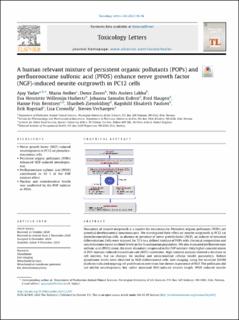| dc.contributor.author | Yadav, Ajay | |
| dc.contributor.author | Amber, Mazia | |
| dc.contributor.author | Zosen, Denis | |
| dc.contributor.author | Labba, Nils Anders | |
| dc.contributor.author | Huiberts, Eva Henriette Willemijn | |
| dc.contributor.author | Samulin-Erdem, Johanna Maria | |
| dc.contributor.author | Haugen, Fred | |
| dc.contributor.author | Berntsen, Hanne Friis | |
| dc.contributor.author | Zienolddiny, Shanbeh | |
| dc.contributor.author | Paulsen, Ragnhild Elisabeth | |
| dc.contributor.author | Ropstad, Erik | |
| dc.contributor.author | Connolly, Lisa | |
| dc.contributor.author | Verhaegen, Steven | |
| dc.date.accessioned | 2022-04-25T10:48:28Z | |
| dc.date.available | 2022-04-25T10:48:28Z | |
| dc.date.created | 2021-01-05T11:16:34Z | |
| dc.date.issued | 2020 | |
| dc.identifier.citation | Toxicology Letters. 2020, 338 85-96. | |
| dc.identifier.issn | 0378-4274 | |
| dc.identifier.uri | https://hdl.handle.net/11250/2992487 | |
| dc.description.abstract | Disruption of neurite outgrowth is a marker for neurotoxicity. Persistent organic pollutants (POPs) are potential developmental neurotoxicants. We investigated their effect on neurite outgrowth in PC12 rat pheochromocytoma cells, in absence or presence of nerve growth factor (NGF), an inducer of neuronal differentiation. Cells were exposed for 72 h to a defined mixture of POPs with chemical composition and concentrations based on blood levels in the Scandinavian population. We also evaluated perfluorooctane sulfonic acid (PFOS) alone, the most abundant compound in the POP mixture. Only higher concentrations of POP mixture reduced tetrazolium salt (MTT) conversion. High-content analysis showed a decrease in cell number, but no changes for nuclear and mitochondrial cellular health parameters. Robust glutathione levels were observed in NGF-differentiated cells. Live imaging, using the IncuCyte ZOOM platform indicated ongoing cell proliferation over time, but slower in presence of NGF. The pollutants did not inhibit neuritogenesis, but rather increased NGF-induced neurite length. PFOS induced neurite outgrowth to about 50 % of the level seen with the POP mixture. Neither the POP mixture nor PFOS affected neurite length in the absence of NGF. Our observations indicate that realistic complex mixtures of environmental pollutants can affect neuronal connectivity via NGF-induced neurite outgrowth. | |
| dc.language.iso | eng | |
| dc.title | A human relevant mixture of persistent organic pollutants (POPs) and perfluorooctane sulfonic acid (PFOS) enhance nerve growth factor (NGF)-induced neurite outgrowth in PC12 cells | |
| dc.type | Peer reviewed | |
| dc.type | Journal article | |
| dc.description.version | publishedVersion | |
| dc.source.pagenumber | 85-96 | |
| dc.source.volume | 338 | |
| dc.source.journal | Toxicology Letters | |
| dc.identifier.doi | 10.1016/j.toxlet.2020.12.007 | |
| dc.identifier.cristin | 1865385 | |
| cristin.ispublished | true | |
| cristin.fulltext | original | |
| cristin.qualitycode | 1 | |
